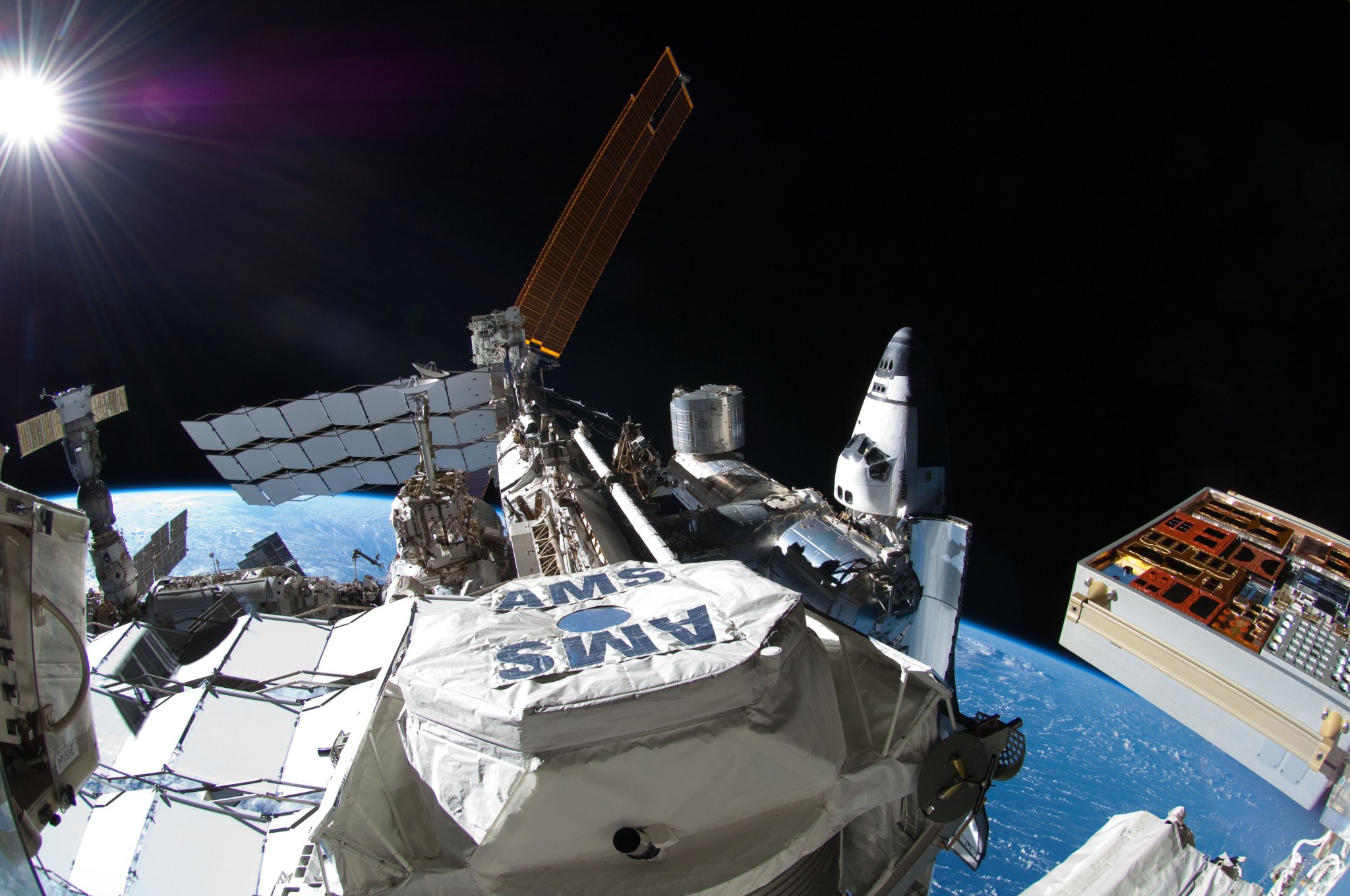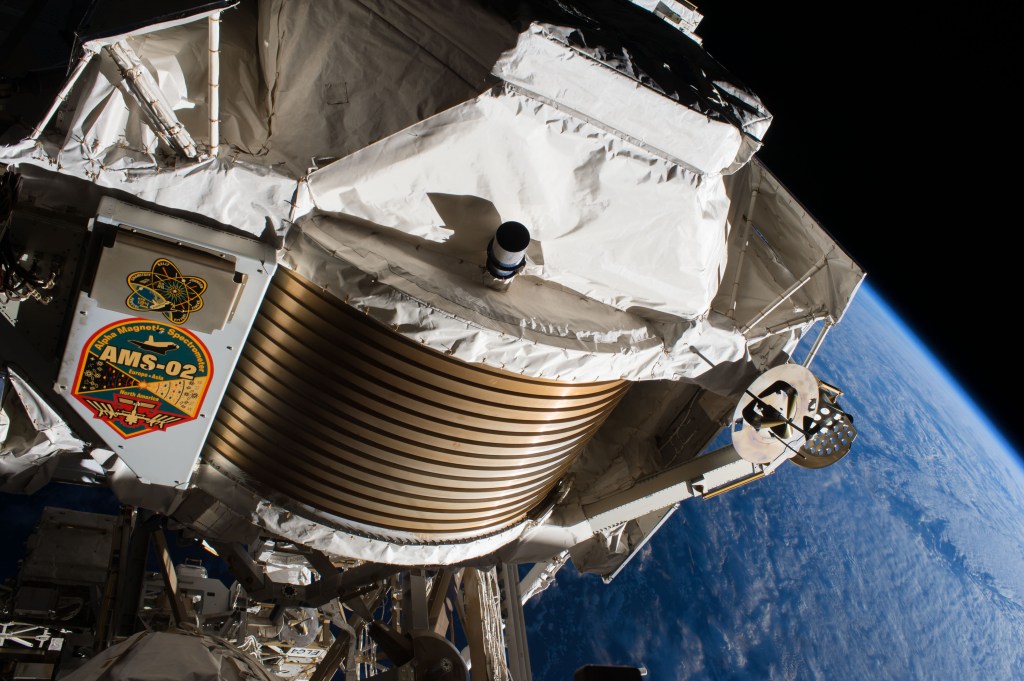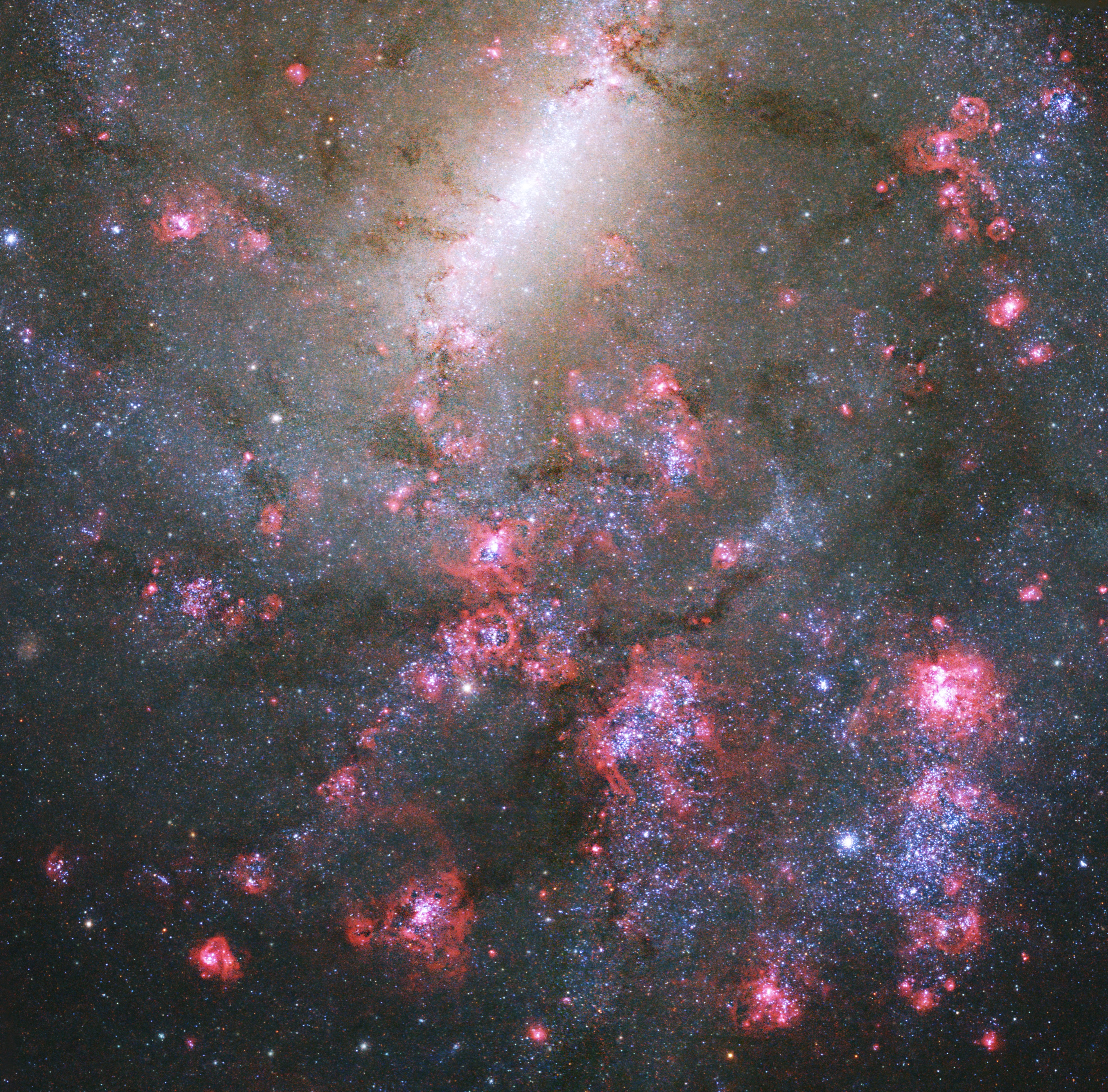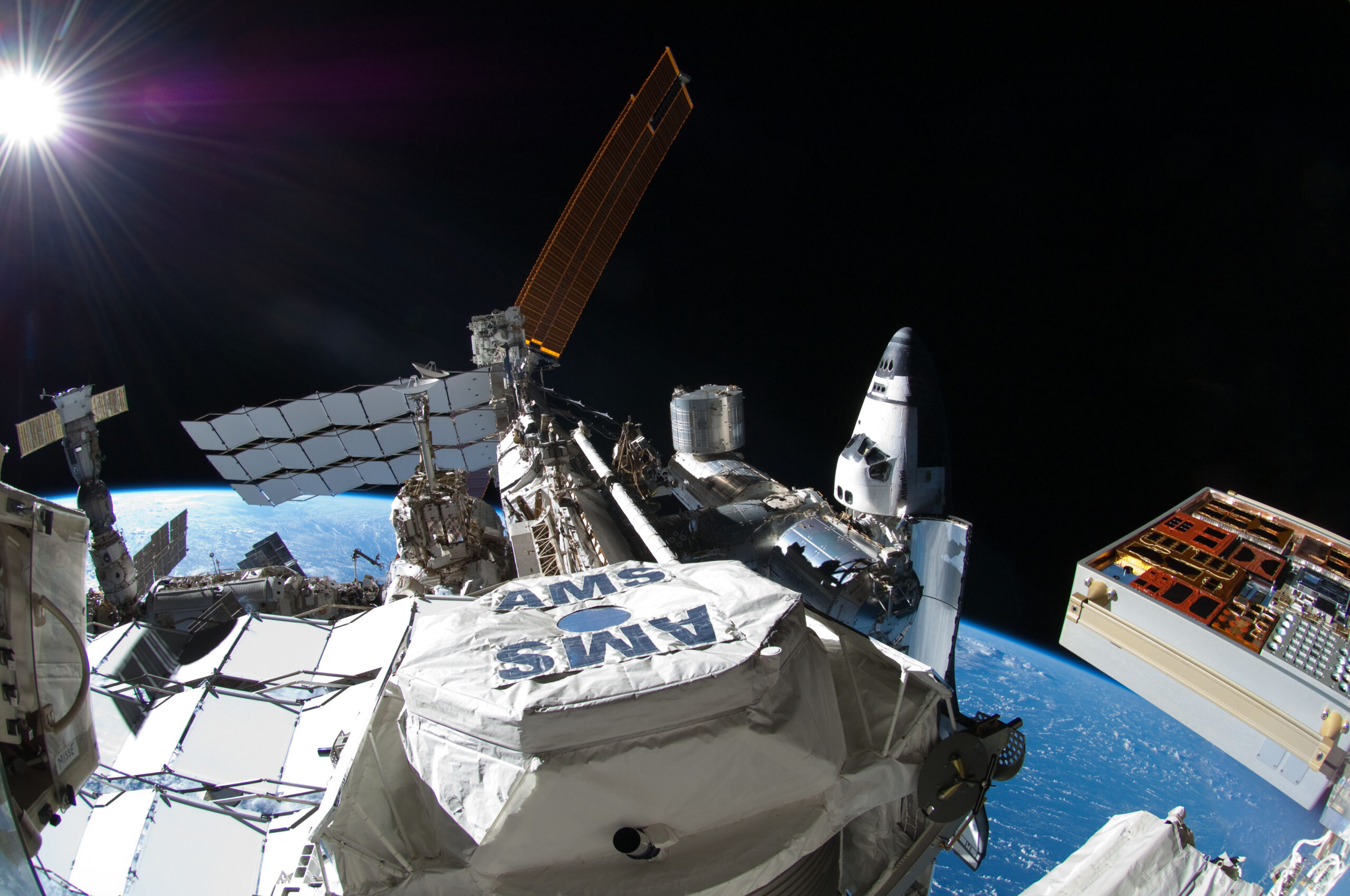 AMS-02 mounted on the outside of the space station.NASA Visible matter in the form of stars and planets adds up to about five percent of the total known mass of the Universe. The rest is either dark matter, antimatter, or dark energy. The exact nature of these substances is unknown, but the International Space Station’s Alpha-Magnetic Spectrometer or AMS-02 is helping to solve the mystery.
AMS-02 mounted on the outside of the space station.NASA Visible matter in the form of stars and planets adds up to about five percent of the total known mass of the Universe. The rest is either dark matter, antimatter, or dark energy. The exact nature of these substances is unknown, but the International Space Station’s Alpha-Magnetic Spectrometer or AMS-02 is helping to solve the mystery.
AMS-02 collects data on charged particles from cosmic ray events, which helps scientists understand the origin of those rays and could ultimately reveal whether dark matter and antimatter exist.
To date, the instrument has collected data on about 573 events per second on average – just over 18 billion per year. This high volume of data enables highly precise statistical analyses, and multiple groups of researchers independently process the raw data to ensure accurate results.
Learn more about astrophysics research on the space station.
 This view shows the core of AMS-02, a massive magnet that bends particles from space to reveal whether their charge is positive or negative.NASA
This view shows the core of AMS-02, a massive magnet that bends particles from space to reveal whether their charge is positive or negative.NASA  AMS-02 is the hexagonal shape visible on one of the space station’s trusses, just to the right of the center.NASA Keep Exploring Discover More Topics Latest News from Space Station Research
AMS-02 is the hexagonal shape visible on one of the space station’s trusses, just to the right of the center.NASA Keep Exploring Discover More Topics Latest News from Space Station Research
 Station Science 101: Earth and Space Science
Station Science 101: Earth and Space Science
 Dark Energy and Matter Stories
Dark Energy and Matter Stories




